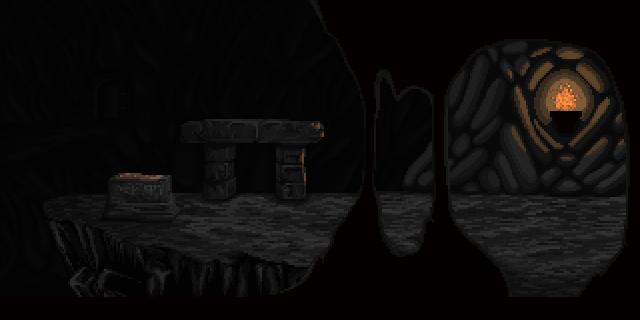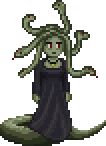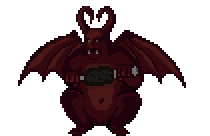Update 14 (11.02.2016) - Tales of paths
After all this time of traveling, all the places I've visited and people I've met, Ehcilc still keeps surprising me with its diverse culture and interesting approaches. This time I've absolutely fallen in love with a particular genre of Ehcilcian folktales. I don't really know how to properly call them or if they even have an official classification, but occasionally I've heard the locals refer to them as tales of paths. They're usually told in very quiet settings and meant for fewer ears. Not because they're inappropriate or offensive or anything like that, but because of the manner they are told.
Almost all the stories of this type begin at a crossroads and present the audience a choice to start moving in any desired direction. As the tale progresses, the storyteller often turns towards the public and asks seemingly rhetorical questions, makes witty remarks or uses over-exaggerated body language. While doing all that, the narrator is actually paying close attention to the slightest of feedback and then shifts the tone and mood of the tale according to listeners' reactions.
Depending on the skill of the storyteller and the range of emotions, a simple narrative can often be told with so many unique and personalized variations that it can almost feel like a whole new story. And on those rare occasions, when everything falls perfectly in place, it's very hard to tell if the story belongs to the listeners or to the creator.

I'm the sort of person who often enjoys the journey just as much or even more than the actual destination. This applies to both how I play and develop video games and this is also how I approach Kingdom of Ehcilc. I already mentioned alternative puzzle solutions in update 9, where I discussed the 4-verb GUI, and I'm going to continue along those lines.
First of all, despite the choices you can make at the beginning and over the course of the game, there's actually only one ending (with minor aesthetic adjustments). You can explore and take different small paths along the way, but the basic framework of the story remains always more or less the same.
For example, let's take the image above. There's a locked stone chest on the left side of the cave and it can be opened in three different ways - by brute force/magic, with reasonable amount of intelligence or you can think outside the box and make use of the tools available to the player. The end result, however, is always the same â€" you open the chest and while your method might cause some minor consequences, it will not affect the overall storyline or the endgame.
Do these choices really matter then, do they serve a purpose? I think they do, because they're not there to increase the replay value or create an alternative storyline. They allow you to customize your gaming experience and offer different ways of playing. If people don't enjoy minigames or moon logic puzzles, then they can just skip those and try other solutions.
Similar sort of variety can be found among the characters. There are some NPCs that pay attention to your actions and act accordingly. They're not placed in Ehcilc to be puzzles or help you solve a specific puzzle, they just happen to live there and depending on your interactions they may help you out or put a spoke in your wheel.
I probably don't have the skills or experience to apply this design philosophy throughout the whole game and there will still be plenty of linear roads, one solution situations and static characters, but every now and then I'll try to throw in something that makes the players feel that this is not something that they have to do, but something they choose to do.
Thank you for reading and please don't be shy to post comments, argue or ask questions.
After all this time of traveling, all the places I've visited and people I've met, Ehcilc still keeps surprising me with its diverse culture and interesting approaches. This time I've absolutely fallen in love with a particular genre of Ehcilcian folktales. I don't really know how to properly call them or if they even have an official classification, but occasionally I've heard the locals refer to them as tales of paths. They're usually told in very quiet settings and meant for fewer ears. Not because they're inappropriate or offensive or anything like that, but because of the manner they are told.
Almost all the stories of this type begin at a crossroads and present the audience a choice to start moving in any desired direction. As the tale progresses, the storyteller often turns towards the public and asks seemingly rhetorical questions, makes witty remarks or uses over-exaggerated body language. While doing all that, the narrator is actually paying close attention to the slightest of feedback and then shifts the tone and mood of the tale according to listeners' reactions.
Depending on the skill of the storyteller and the range of emotions, a simple narrative can often be told with so many unique and personalized variations that it can almost feel like a whole new story. And on those rare occasions, when everything falls perfectly in place, it's very hard to tell if the story belongs to the listeners or to the creator.

I'm the sort of person who often enjoys the journey just as much or even more than the actual destination. This applies to both how I play and develop video games and this is also how I approach Kingdom of Ehcilc. I already mentioned alternative puzzle solutions in update 9, where I discussed the 4-verb GUI, and I'm going to continue along those lines.
First of all, despite the choices you can make at the beginning and over the course of the game, there's actually only one ending (with minor aesthetic adjustments). You can explore and take different small paths along the way, but the basic framework of the story remains always more or less the same.
For example, let's take the image above. There's a locked stone chest on the left side of the cave and it can be opened in three different ways - by brute force/magic, with reasonable amount of intelligence or you can think outside the box and make use of the tools available to the player. The end result, however, is always the same â€" you open the chest and while your method might cause some minor consequences, it will not affect the overall storyline or the endgame.
Do these choices really matter then, do they serve a purpose? I think they do, because they're not there to increase the replay value or create an alternative storyline. They allow you to customize your gaming experience and offer different ways of playing. If people don't enjoy minigames or moon logic puzzles, then they can just skip those and try other solutions.
Similar sort of variety can be found among the characters. There are some NPCs that pay attention to your actions and act accordingly. They're not placed in Ehcilc to be puzzles or help you solve a specific puzzle, they just happen to live there and depending on your interactions they may help you out or put a spoke in your wheel.
I probably don't have the skills or experience to apply this design philosophy throughout the whole game and there will still be plenty of linear roads, one solution situations and static characters, but every now and then I'll try to throw in something that makes the players feel that this is not something that they have to do, but something they choose to do.
Thank you for reading and please don't be shy to post comments, argue or ask questions.







 Also, you have the honor of hosting the next competition.
Also, you have the honor of hosting the next competition.



